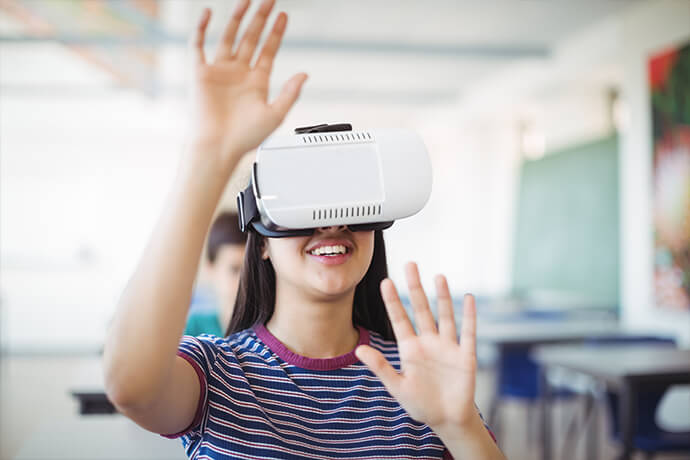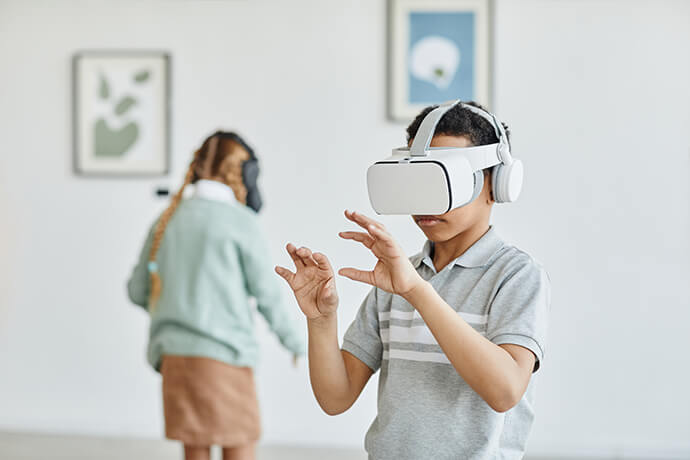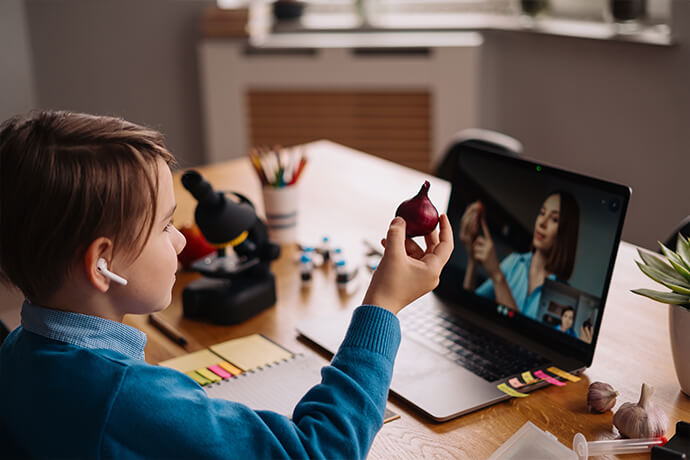 SPEAKERS
SPEAKERS
 TOPICS
TOPICS
Exploring VR's transformative role in education, revolutionizing learning methods for all ages.

Virtual reality (VR) has come of age as one of the biggest game changers in education at a time when technology is evolving fast. VR is bringing a new look to old learning methods, ranging from immersive simulations to interactive experiences, and changing the way students interact with educational content. In this article, we delve deeper into how VR is useful in learning and identify the wide range of benefits that it brings to learners of all ages.
Virtual reality has become an innovative instrument in education, providing the students with the opportunity to live through the learning process, beyond the limits of traditional ways of teaching. Virtual environments enable educators to take students to historic events, to take apart biologically complex structures, or to demonstrate scientific concepts in ways not previously possible. The interactivity of VR encourages students to be active in their learning which promotes better understanding and retention of information.
In addition, VR facilitates experiential learning as students get to interact with simulations and experiments in a secure setting. The more accessible VR technology becomes, the more it has the ability to fill in gaps in education through the matching of different learning styles and needs. In other words, virtual reality is changing education as it gives students live and interactive learning opportunities that will prepare them for the future.

VR is changing education due to a variety of advantages that make the learning process more pleasant for students. Below we look at the benefits of virtual reality in education:
The primary advantage of the use of virtual reality in education lies in its captivating and involving nature that traditional teaching methods cannot match. VR uses realistic and interactive virtual environments to grab students’ attention and keep them active for the entire learning process. This increased involvement results in higher motivation, participation and, finally, quality learning outcomes.
VR enables experiential learning where students can engage with virtual simulations and scenarios that are very similar to real-life experiences. It allows students to delve into historical sites, carry out science experiments, and train professional skills, bringing hands-on experiences to these learners, thus enhancing their understanding of complex concepts. VR enables the involvement of more than one sense and active participation, which results in deeper learning and retention.
Virtual reality in learning has another important advantage in that it has the possibility to increase the accessibility and inclusivity of the learning process for students of different needs and abilities. VR allows for individual learning styles as it provides personalized learning situations according to personal choice. It can also offer different types of instructions to disabled students for them to become an active part of the learning process. Through removing barriers to education, VR drives inclusivity and guarantees that all students can achieve success.
VR is the bridge between theoretical knowledge and practice for those subjects that require practical application, such as science, engineering, and healthcare. Students can participate in practical exercises, simulations, and virtual experiments that support them in using what they have learned in a real-life situation. This practical knowledge not only consolidates theoretical principles but also allows students to practice the critical, problem-solving, decision-making, and judgment skills necessary for success in their profession.
In virtual reality, students have an opportunity to conduct experiments in a safe and controlled environment. Be it conducting dangerous science experiments, practicing complex surgical procedures, or navigating challenging scenarios, VR enables students to make mistakes and learn in a risk-free environment. The practical learning methodology breeds self-assurance, self-reliance, and self-motivation, leaving students in control of the studying process.
While virtual reality (VR) offers numerous benefits for education, it also comes with its share of drawbacks that educators and institutions must consider:
Cost is a major disadvantage to VR in education because it is expensive to implement and maintain the VR technology. VR hardware, software and content creation tools are costly, thus, some schools and institutions with insufficient budgets may not be able to afford them. Moreover, the continuous expenses associated with maintenance, improvements, and technical assistance can put additional pressure on financial resources.
The advances in VR technology notwithstanding, VR devices and content are still inaccessible in most educational contexts. All students do not have similar access to VR hardware, software, and high-speed internet connectivity needed for immersive VR experiences. The absence of such access could exacerbate the already existing equity disparities in education, putting students who are unable to afford or get access to VR technology at a disadvantage.
Long-term use of VR headsets may cause discomfort, nausea and eye fatigue, particularly in children. More so, students who undergo VR experiences that simulate frightening or distressing situations may develop anxiety effects and psychological anguish. Educators need to be aware of the possible health and safety hazards of VR and create standards to minimize these risks.

Virtual reality (VR) is a developing technology and there are emerging trends that determine the future of VR learning and education. Here are some of the key trends to watch:
The development of artificial intelligence (AI) and machine learning is making VR platforms more adaptive. Such platforms can analyze student performance data in real-time and dynamically adapt learning experiences to each student’s needs. Adaptive VR platforms by offering individualized learning paths and select interventions increase engagement, ensure mastery of learning, and improve learning results in general.
Collaboration is an important factor in the modern world and VR provides many unique opportunities for collaborative learning. The emerging concept of VR learning are provision of virtual collaborative spaces where students can communicate with their peers, instructors and experts from all over the world. No matter if it’s group assignments, online debates, or team problem-solving activities, these interactive learning circumstances promote teamwork, communication abilities, and social presence.
The COVID-19 pandemic facilitated the transition to remote learning technologies, and VR became a platform that could be successfully employed to deliver an immersive educational experience in a virtual classroom environment. In spite of the reopening of schools, the process of learning by means of a hybrid model and online courses will resume, with VR serving as an ideal alternative for distance education. With VR, students can participate in live real-time events that are happening on the other side of the world, or they can take part in interactive workshops or simulations.
In addition to typical academic environments, VR is being employed for lifelong learning and professional training. The new developments in VR learning are the creation of virtual training programs, simulations, workshops for workforce training, skills development, and continuing education. VR provides people with an opportunity to develop their skills, search for new careers, and stay competitive in the modern job market, offering all from virtual job interviews and career simulations to immersive training modules and professional networking events.
The emergence of virtual reality in education implies a change in the teaching and learning paradigms. VR is capable of increasing interactivity, enabling experiential learning, and assisting inclusivity and, therefore, could have a transforming effect on education and training for the challenges of the 21st century. The advances in technology will bring new opportunities to create immersive learning experiences, thus, opening a truly unlimited kind of learning era.